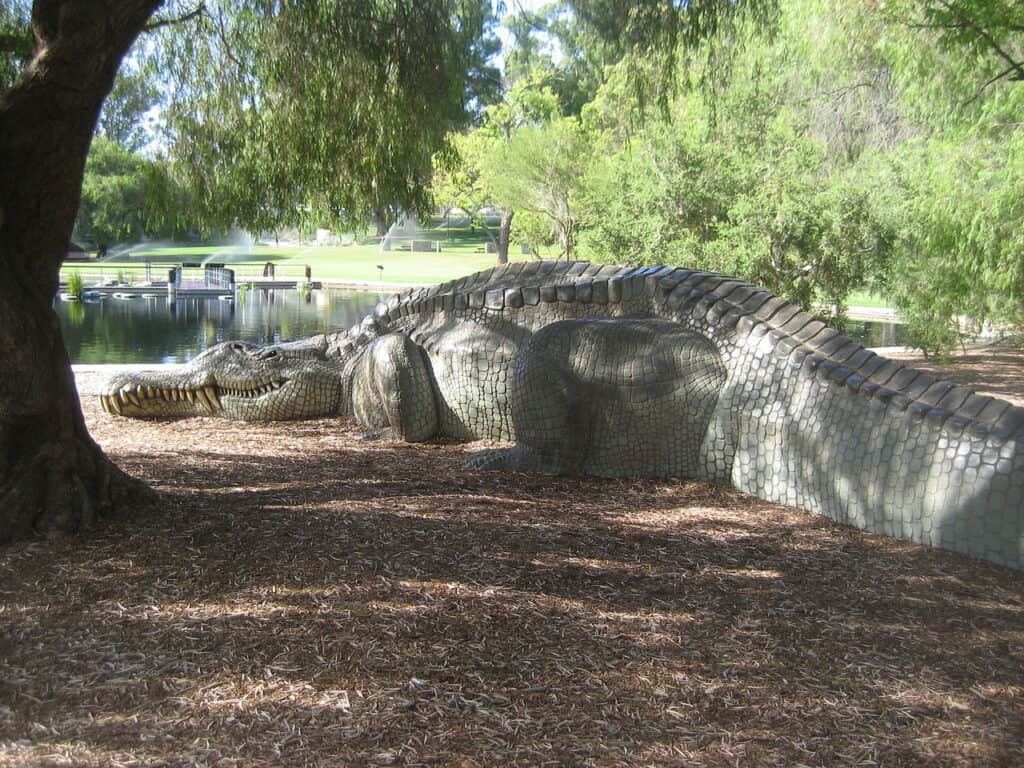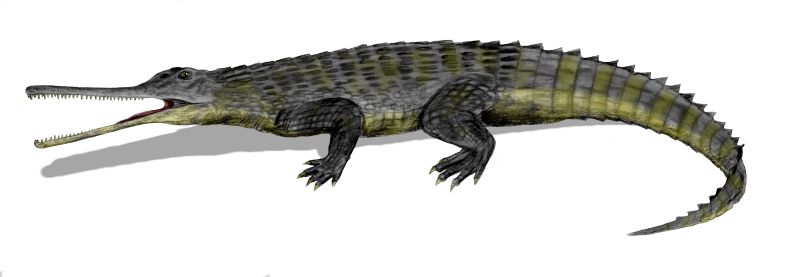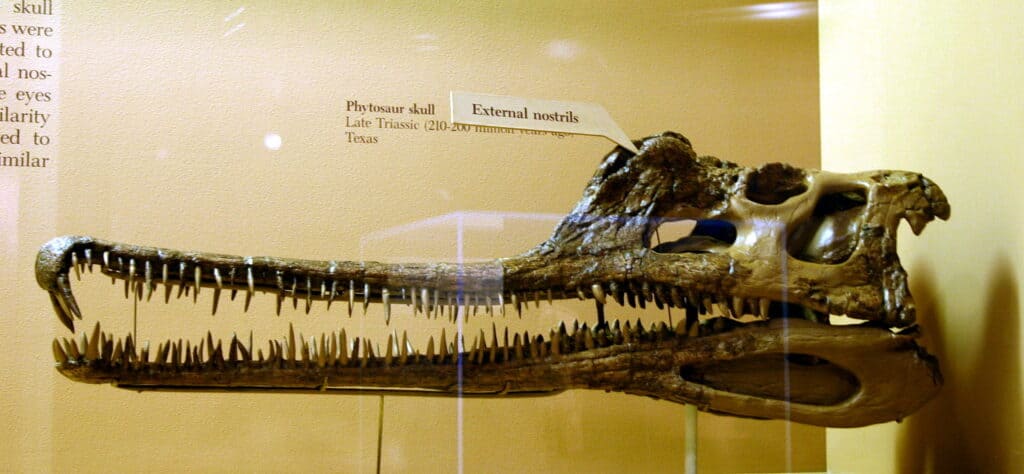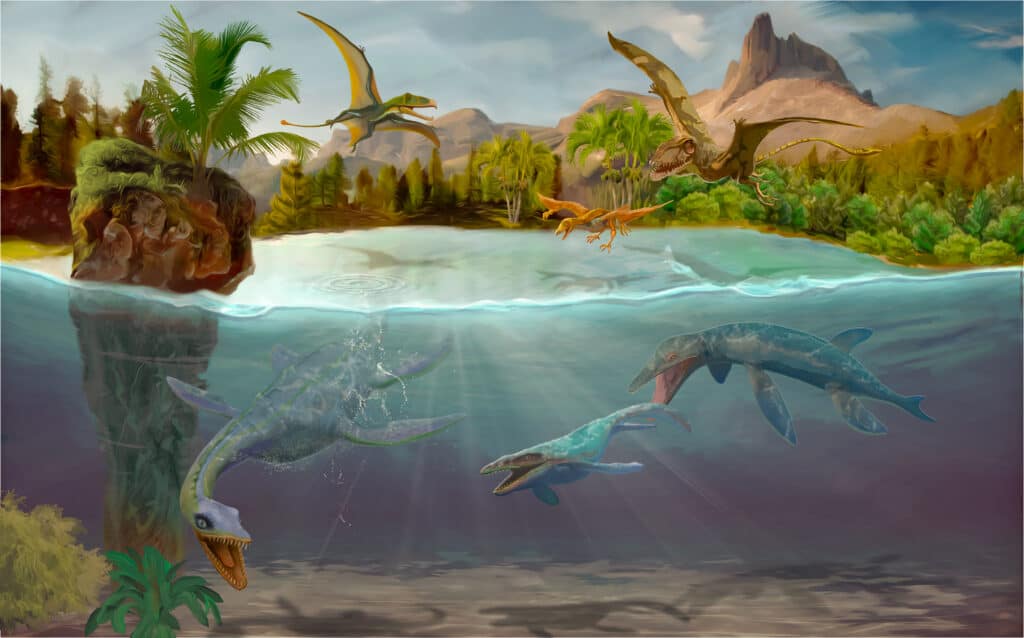Over the years, the earth has witnessed the rise and fall of many animals, as well as the evolution and extinction of others. Some of the animals in the world today are not as fascinating as the ones that lived thousands to millions of years ago.
Take, for instance, reptiles. There are over 10,000 unique species of this group of animals scattered around the world, with some still undiscovered.
An example of a prehistoric reptile that had a lot of peculiar features is the phytosaur. Phytosaurs are an extinct group of giant reptiles that were mostly semiaquatic and lived in the Late Triassic Period.
This article provides vital information and interesting facts about these prehistoric reptiles.
Background on Phytosaurs

Phytosaurs had long, pointed jaws that were armed with numerous teeth.
When the first phytosaur fossil was found, experts were not so sure what animal it belonged to. Some thought it belonged to a crocodile, but that theory was quickly disproved after studying the head, jaw, and dentition. Other scientists just concluded that the fossil belonged to a “plant lizard with cylindrical teeth.” Despite the name, phytosaurs are not dinosaurs.
Because they shared a close resemblance with crocodiles, experts categorized them under archosaurs which include crocodiles, alligators, birds, and flying reptiles called pterosaurs.
Although they had the bodies of crocodiles, one of the easiest ways to identify phytosaurs was by their long, pointed jaws that were armed with numerous teeth. They had long tails, long toothy snouts, wide, hefty bodies covered with armored scale rows, short legs, and wide, massive bodies.
Additionally, different phytosaur species showed different types of skull forms, with some having broad snouts and more heterodont teeth, while others had very long, slender snouts with homodont teeth. It is likely that the broad-snouted species consumed a more extensive variety of prey, and the narrow-snouted species primarily ate fish.
Despite these animals having no direct relation to crocodiles, they still shared some similarities, including their choice of habitat. These reptiles thrived both on land and in water. Also, their nostrils were set on a high crest on the skull, directly in front of their eyes. This adaptation made it easier for phytosaurs to float underwater with only their eyes and nostrils protruding, like a crocodile.
Differences Between Phytosaurs and Crocodiles

This phytosaur statue shows how big these reptiles were compared to modern crocodiles.
One of the primary differences between phytosaurs and crocodiles is the length of their snouts. While crocodiles have shorter and more curved snouts, the snouts of phytosaurs were very long and mostly narrow. Also, crocodiles have their nostrils very close to the end of their snouts, while phytosaurs had theirs directly in front of their eyes.
Phytosaurs were more armored than crocodiles, with thicker scales and heavy bone scutes protecting their skin. These reptiles also had a complex arrangement of gastralia, also called abdominal ribs, protecting their bellies. Despite these extra protective “gear,” phytosaurs did not have the second palate that enabled crocodiles to breathe even with a mouthful of water.
Unlike crocodiles that thrive underwater and on land, phytosaurs were more used to underwater life. Despite being semiaquatic, there is enough evidence to prove that most phytosaurs were more adapted to aquatic life. However, some fossils show features like longer limb bones and deeper pelvis, hinting that a few of these reptiles could actually survive on land.

Compared to crocodiles, phytosaurs had longer snouts.
©800 × 277 pixels, file size: 22 KB, MIME type: image/jpeg – Original / License
Phytosaur Distribution and Habitat
Although there is no exact location regarding where phytosaurs lived, fossils have been found in several parts of the world, including North America, Europe, Asia, northern Africa, and Madagascar.
Paleontologists have deduced that phytosaurs lived in marshes and river settings similar to those of contemporary crocodiles, given their crocodilian-like body structure, and the fact that these reptiles existed during the Triassic period.
The Upper Triassic, when phytosaurs existed, began 237 million years ago, and ended 201.3 million years ago. Within those years, four distinct phytosaur groups existed, one after the other. Because their fossils are scattered across different parts of the world, experts can determine the geologic epoch of each group of phytosaurs, considering that none of the four groups overlap.
The origin of phytosaurs largely remains a mystery. There are currently no fossils that demonstrate how phytosaurs evolved from older archosaurs. Paleontologists believe that there may yet be a Middle Triassic phytosaur record that hasn’t been found.
However, by the end of the Triassic period, phytosaurs went extinct. Later on, in the Jurassic period, other crocodilians and archosaurs took their place, with none specifically evolving from a phytosaur. The only similarity phytosaurs and these Jurassic period crocodilians shared was the ability to survive on land and underwater.
What Did Phytosaurs Eat?

Some phytosaur species ate fish and other smaller water creatures.
The term “phytosaur” literally translates to “plant lizard,” but these reptiles were not plant eaters. Because the first phytosaur fossil was poorly preserved, the discoverer initially believed that some mud castings of the tooth sockets represented the natural teeth. He assumed the animal was a plant eater because these alleged teeth were rounded and blunt.
Actually, phytosaurs were predatory creatures that consumed fish and other animals because they had sharp, crocodile-like teeth. Another indicator of their predatory lifestyle is their size; these reptiles were as long as 39 feet, some reaching even 40 feet, and surpassed the length of even the largest crocodile.
Phytosaurs may have ambushed land animals when they descended to rivers or waterholes to drink, similar to how living crocodilians attack antelopes and deer, despite the lack of additional evidence proving what phytosaurs consumed.
This is because of some survival adaptations, as well as the sharpness and shape of their teeth. Different species of phytosaurs had differently shaped snouts. The species with the broad snouts are believed to have consumed a wider variety of prey, while the ones with narrow snouts mostly ate fish and other smaller water creatures.

This artist’s rendering depicts a scene from the Triassic Period.
©iStock.com/david.costa.art
What was Life Like During the Upper Triassic Period?
The climate that supported the dominant animals of the period, the reptiles, was warm and dry with no ice at the poles. Reptiles ruled the Triassic era – although the first dinosaurs, marine reptiles, lizards, and tortoises were appearing. There were mammals during the Triassic but they stayed in the background until the dinosaurs became extinct at the end of the Cretaceous period. Crocodiles reigned supreme amid the conifers, cycads, and ferns that dotted the landscape. Beneath their feet, forces were pulling the supercontinent, Pangaea, apart to form rift basins between North America and Europe and between Africa and South America. These forces continued during the Jurassic to form the Atlantic Ocean, the Gulf of Mexico, Antarctica, India, and Australia.
The photo featured at the top of this post is © User:Moondyne / CC BY-SA 3.0 – License / Original
Sources
- Phytosaurs / Accessed November 5, 2022
- Scientific American / Accessed November 5, 2022
- Palaeos / Accessed November 5, 2022
Thank you for reading! Have some feedback for us? Contact the AZ Animals editorial team.







